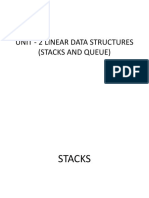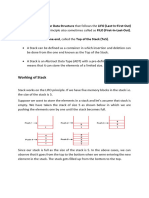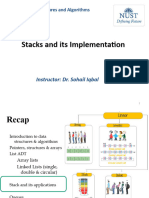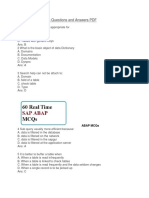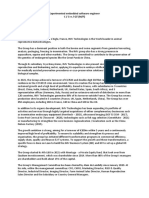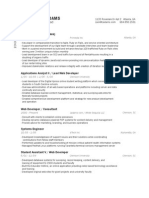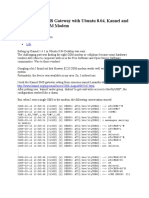0% found this document useful (0 votes)
2 views4 pagesLec - 6 Stack Data Structure
A stack is a linear data structure that follows the Last-In-First-Out (LIFO) principle, where elements are added and removed from the top. Key operations include push, pop, peek, isEmpty, and isFull, with advantages such as efficient operations and memory management support, but also limitations like size constraints and limited access scope. Stacks are commonly used for tasks like backtracking, expression conversion, and implementing undo/redo functionality.
Uploaded by
sauravsapkal76Copyright
© © All Rights Reserved
We take content rights seriously. If you suspect this is your content, claim it here.
Available Formats
Download as PDF, TXT or read online on Scribd
0% found this document useful (0 votes)
2 views4 pagesLec - 6 Stack Data Structure
A stack is a linear data structure that follows the Last-In-First-Out (LIFO) principle, where elements are added and removed from the top. Key operations include push, pop, peek, isEmpty, and isFull, with advantages such as efficient operations and memory management support, but also limitations like size constraints and limited access scope. Stacks are commonly used for tasks like backtracking, expression conversion, and implementing undo/redo functionality.
Uploaded by
sauravsapkal76Copyright
© © All Rights Reserved
We take content rights seriously. If you suspect this is your content, claim it here.
Available Formats
Download as PDF, TXT or read online on Scribd
/ 4




